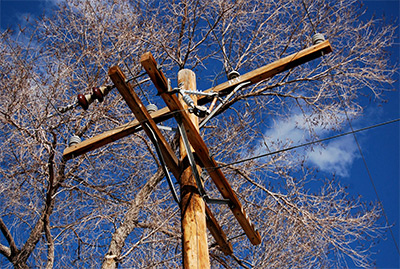Question
I set up a 60-gallon saltwater aquarium in my home last fall, and with my area being very prone to severe weather in spring, I have some questions about aquariums during power outages. Specifically, I’d like to know:
- How long can an aquarium go without power before you have to do something about it? In other words, if the electricity goes out and I just leave the tank alone waiting for it to come back on, how long can the fish and corals survive?
- Which aquarium systems should be given top priority during a power outage? Am I correct in assuming temperature control, lighting, and aeration?
- What materials/equipment do you recommend I keep on hand in case of a power outage?
– Submitted by Stewart K.”
Answer
Your questions are most timely, Stewart, considering my neighborhood just experienced a 13-hour power outage after a tree fell and took out our power lines! Our homes back up against a deep, wooded ravine and the power lines run right along the edge of the ravine, so this happens about once a year (twice last year!) due to high winds or erosion.
Anyhow, my power woes aside, let’s look at your questions one at a time:
1) How long can my aquarium go without power before livestock losses occur?
I’m afraid there’s no right or wrong answer to this question. Generally speaking, the average marine aquarium can “shrug off” several hours without power. However, many factors come into play here. For example, the size of your tank, the stocking level, the activity level of your fish, the ambient temperature, the location of the tank in your home, and other factors will influence how quickly dissolved oxygen in the water is depleted (affecting the livestock as well as the aerobic nitrifying bacteria responsible for biofiltration) and/or how rapidly the water temperature might shift out of the safe range.
My 125-gallon system came through the aforementioned 13-hour outage with no problems and no significant intervention on my part, but that was largely due to the fact that it was relatively warm outside. The room temperature never dropped below 68°F, and the water temperature never got lower than the mid-70s. It would have been a very different story if this outage had occurred in mid-January when it’s not unusual for temps in my neck of the woods to drop below zero.
2) Which systems should get top priority during a power outage—temperature control, lighting, and aeration?
I agree with prioritizing temperature control and aeration/circulation, but I wouldn’t be overly concerned about the lighting unless you’re facing a prolonged power outage of at least several days. It won’t harm your fish to be in the dark during the outage—in fact, it will help keep them calm and less active so they consume less oxygen.
As far as corals are concerned, while it’s true that many of them depend on appropriate lighting to sustain the symbiotic zooxanthellae residing in their tissues, most can easily tolerate a few days of reduced light or darkness. After all, we do ship them all around the world in dark containers with no problem. Also, reef-quality lighting draws a lot of power, so if you’re using an emergency backup power supply with limited capacity, running your lights will likely be impractical.
3. What materials/equipment should I keep on hand in case of a power outage?
A very basic power-outage supply kit might include the following:
- Battery-powered air pump(s) along with airline tubing and airstones for providing emergency aeration. Keep plenty of extra batteries on hand, of course. In lieu of/in addition to battery-powered air pumps, you can use the very-low-tech aeration method of scooping out water and pouring it back into the tank at regular intervals.
- Heavy blankets or Styrofoam. To provide thermal insulation, you can simply wrap a heavy blanket (or blankets) around the tank or tape Styrofoam (ideally cut to fit the tank ahead of time) to the sides of the tank.
- Plastic water bottles/jugs for cooling/warming the water. For cooling, fill some of these with water (ahead of time) and keep them in the freezer. If the power goes out on a very warm day and the temperature is apt to climb dangerously high, you can simply drop one or more of these in your tank to slow the temperature increase. On the other hand, if power is lost when it’s cold outside, you can fill empty bottles with hot water from the tap and float them in the tank.
If you want the confidence that you can power your system’s life-support equipment during a prolonged power outage, you might choose to invest in a portable gas-powered generator. While these units can be costly, one might be a very wise investment if you’ve already sunk thousands of dollars in your aquarium system!
Also, some hobbyists keep an uninterruptible power supply (UPS) on hand for emergency power during an outage. However, keep in mind that these units vary considerably in the load they can handle and for how long. So, you may be restricted to, say, running just powerheads for circulation for a fairly limited amount of time, which may or may not be adequate (or particularly cost-effective) life support depending on the duration of the outage and other circumstances.
Fellow salties, what’s your advice?
So, if any of our fellow salties out there have additional advice for Stewart—or recommendations regarding emergency backup power, etc.—please feel free to share them in the comment section below.



